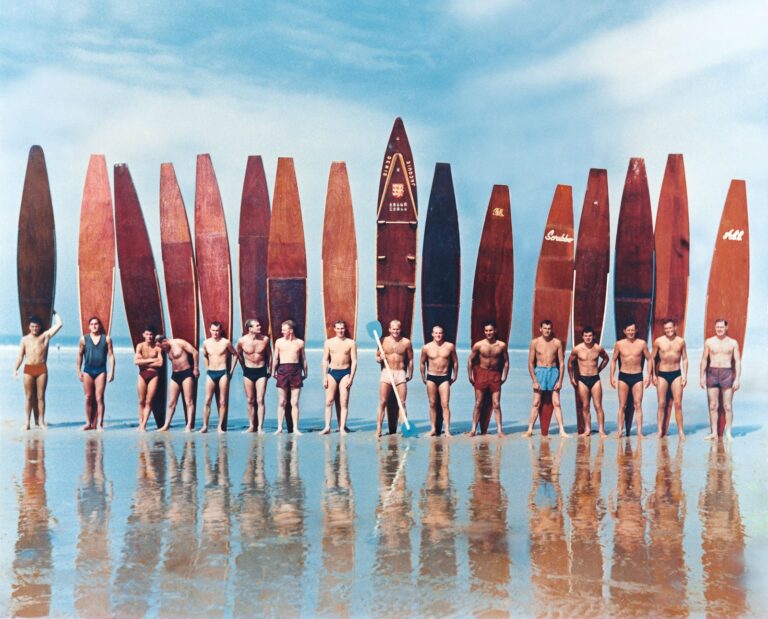The origins of surfing - Polynesian heritage
More than just a sport, surfing has its roots in the ancient traditions of Polynesia, particularly Hawaii. Practised for centuries, surfing was a central part of the social and spiritual life of the Polynesians.
Getting started in Polynesia
The first surfers were Polynesian islanders who rode the waves on koa wood boards. In Hawaii, surfing, or "he'e nalu", was a sacred ritual symbolising the connection between man and the sea. Chiefs (ali'i) and commoners (maka'ainana) used boards of different sizes depending on their social status.
Discovered by Europeans
Surfing was first documented by Europeans during Captain James Cook's expeditions in 1778. Explorer James King described the skill of Hawaiian surfers with admiration, emphasising their mastery and grace.
Decline and Renaissance
The arrival of missionaries in the 19th century led to a decline in surfing, which was seen as a pagan activity. However, in the late 19th and early 20th centuries, iconic figures such as Duke Kahanamoku revitalised surfing. An Olympic athlete and cultural ambassador, Kahanamoku popularised surfing around the world, particularly in California and Australia.
Conclusion
Surfing, with its deep Polynesian roots, has survived the challenges and evolved into a world-renowned sport. It continues to captivate and inspire, connecting people to the sea and to a rich cultural heritage.

